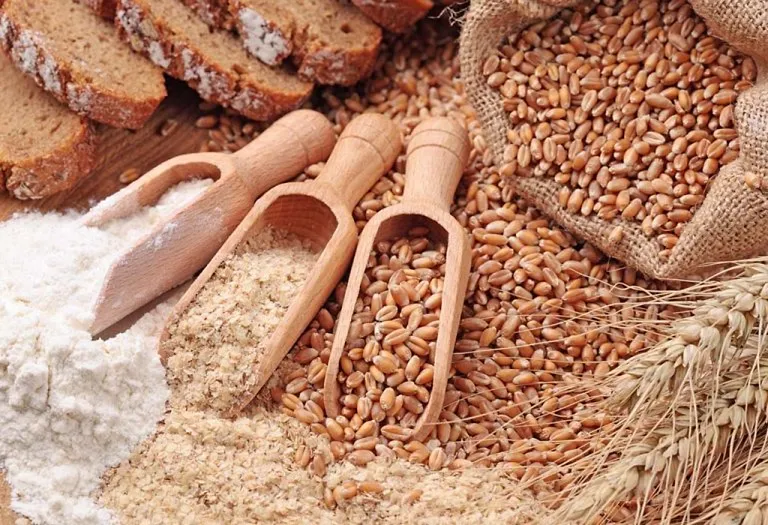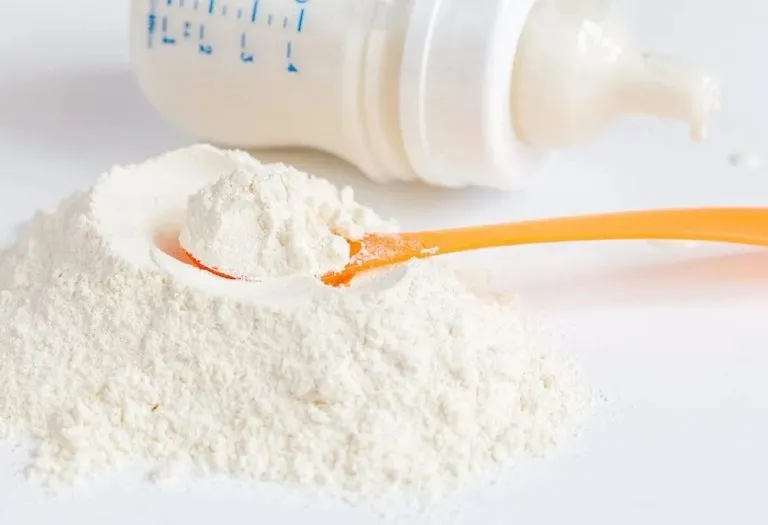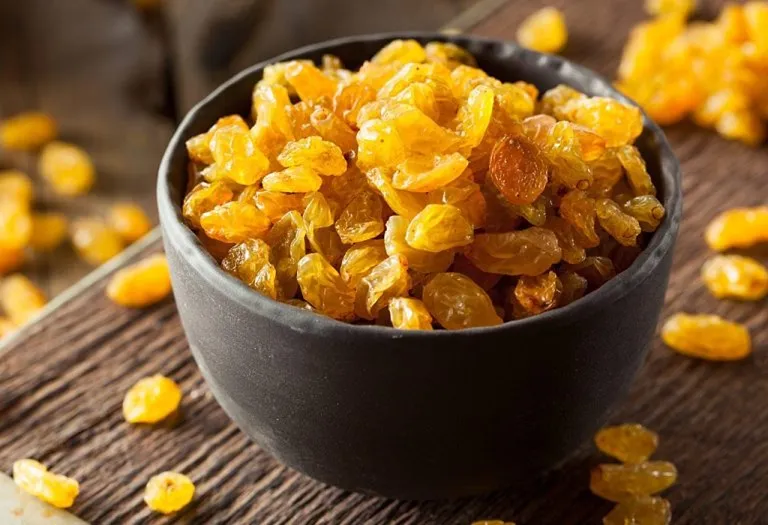Nuts for Babies: Benefits, When and How to Introduce

- Is It Safe to Give Nuts to a Baby?
- When Can You Give Nuts to Your Baby?
- Nutritional Benefits of Nuts for Infants
- How to Introduce Nuts to Babies
- Nut Allergy in Infants
- How to Know If Your Baby Is Having an Allergic Reaction After Eating Nuts
- Smart Ways to Include Nuts in a Baby’s Diet
- What Are Some Other Alternatives to Nuts for Babies?
- Simple and Healthy Nut Recipes for Babies
- FAQs
When it comes to introducing solid foods to your little one who has just managed to show the early signs of being prepared for it, you are right to feel worried and be extra careful about what you expose your baby too. Solid food items are a novelty for babies and their bodies, which can either digest them successfully or respond unexpectedly to certain substances present in them. Take, for example, nuts for infants. Can babies eat nuts? You might think of introducing walnuts for babies or any other kind of tree nuts to check if he ends up liking them. While nuts don’t pose a direct threat to children in a way, their ability to give rise to allergic reactions can very well decide whether they are safe for your little one or not.
Is It Safe to Give Nuts to a Baby?
Nuts are one of the natural products that are found in vegetation around the world. Since they naturally integrate into the diet of many people, giving them to your baby is not particularly dangerous. Nuts can be introduced into a baby’s diet at around 9-10 months of age. But you should do so only after checking with your baby’s paediatrician. You must also check in what form the nuts should be introduced (1).
When Can You Give Nuts to Your Baby?
Be it a single peanut or an entire platter of various nuts that you have procured, knowing the right time to introduce them to your baby is extremely necessary. Furthermore, no medical study or research has arrived at a conclusive age or period that can be deemed ideal to let a baby try out nuts for the first time. The presence of nut-based allergies is pretty common, which can further make your decision a bit dicey. However, according to the American Academy of Pediatrics, it is a good practice to let your baby get used to other solid food items initially and then introduce nuts in his diet (2). You could start giving your baby nuts as early as 9-10 months of age or you can introduce it once he turns 1 year old. Some parents also add nuts in their children’s once they have crossed their toddler years, i.e., after 3 years of age.
Nutritional Benefits of Nuts for Infants
The variety of nuts that are available to us is just a simple sign of a large number of nutritional benefits their inclusion in the diet can provide to the infants. Most of these are extremely essential to support their initial phases of development.
- Many nuts such as peanuts and pistachios tend to contain resveratrol. This helps in supporting the development of their immune system (3).
- Including nuts regularly in a child’s diet helps support his brain function and development.
- Nuts usually contain unsaturated fats. These fats are highly beneficial for the body, as compared to other kinds of fat.
- For families that are primarily vegetarian, nuts provide the necessary amount of protein that the baby’s body would usually need.
- Nuts also contain enough fibrous elements within it, which can help take care of any bouts of constipation and stimulate the digestion in a baby (4).
- Some nuts also contain phosphorous in good amounts. This plays a key role in developing the teeth and bones in young babies effectively.
- Walnuts are known to be a rich reserve of omega-3 acids, which are highly essential in maintaining good health and proper blood circulation.
- The presence of vitamin E, flavonoids, and various antioxidants in a bunch of nuts make sure that the waste material inside the baby’s body is flushed out effectively.

How to Introduce Nuts to Babies
Introducing nuts to babies is an important step in expanding their diet, but it needs to be done carefully to avoid choking hazards and allergic reactions. Here are some safe ways to introduce nuts to your little one:
1. Start With Nut Butters
Instead of giving whole nuts, start by offering smooth nut butter like peanut or almond butter. You can mix a small amount of it into your baby’s puree, oatmeal, or yogurt to make it easier to consume.
2. Introduce One Nut at a Time
When introducing nuts, do so one at a time, and wait a few days before offering a new type. This helps in identifying any potential allergic reactions and ensures your baby can tolerate each nut safely.
3. Mix With Baby’s Favorite Foods
You can sprinkle finely ground nuts or nut powder into foods your baby already enjoys, such as mashed bananas, applesauce, or porridge. This allows them to gradually get used to the flavor and texture.
4. Avoid Whole or Chopped Nuts
Whole nuts or large nut pieces are a choking hazard for babies and young toddlers. Always crush nuts into a fine powder or opt for nut-based products like pastes or powders to make them safe for consumption.
5. Observe for Allergic Reactions
According to Food Allergy Research & Education, after introducing nuts, monitor your baby for any signs of allergic reactions such as hives, swelling, or difficulty breathing (5). If you notice any of these symptoms, stop feeding the nuts immediately and consult your pediatrician.
6. Use Baked Goods
You can introduce nuts by incorporating almond or peanut flours into baked goods like muffins or pancakes. This adds a safe way to expose your baby to nuts while making the food easy to chew and swallow.
7. Consult Your Pediatrician if Concerned
If your baby has a family history of food allergies, consult your pediatrician before introducing nuts. They may recommend allergy testing or offer guidance on how to introduce nuts safely.
Nut Allergy in Infants
It could be cashew nuts or it could be a specific type of a tree nut, but an allergic reaction to the presence of nuts is not a novelty. The allergic reaction is what keeps most parents at bay from introducing nuts to their baby.
Nuts That May Cause Allergy
While a bunch of everyday nuts might usually be safe for kids, tree nuts generally pose a higher chance of allergy. Some of them are:
- Pistachios
- Hazelnuts
- Cashews
- Almonds
- Walnuts
How to Know If Your Baby Is Having an Allergic Reaction After Eating Nuts
Introducing nuts to your baby is an important milestone, but it’s essential to monitor them for any signs of an allergic reaction. Nut allergies are common, and recognizing the symptoms early can help you take quick action to keep your baby safe. Here are some signs to watch for after your baby eats nuts:
- Red, itchy spots or welts may appear on your baby’s skin shortly after consuming nuts.
- Look for swelling around the lips, face, eyes, or throat, which could indicate an allergic reaction.
- Digestive issues, including vomiting, diarrhea, or stomach cramps, are common signs of a food allergy.
- Wheezing, shortness of breath, or rapid breathing can be serious symptoms of a nut allergy.
- Persistent coughing, sneezing, or a runny nose after eating nuts could be a reaction to an allergen.
- If your baby becomes unusually fussy or cries inconsolably, they could be uncomfortable due to an allergic reaction.
- A change in skin color, such as becoming pale or developing a bluish tint, especially around the lips, may indicate trouble breathing or poor circulation.
- In severe cases, an allergic reaction can cause your baby to lose consciousness, which requires immediate medical attention.
- Swelling in the mouth or throat can lead to difficulty swallowing or speaking and is a sign of a severe allergic reaction called anaphylaxis.
Smart Ways to Include Nuts in a Baby’s Diet
One of the easiest ways to include nuts in the diet of your little one is by making use of nuts powder for babies. This powder can be introduced in various baby food preparations in multiple ways, such as:
- Adding the powder to the mix used to make cookies and laddoos.
- Mixing the powder with the dough used to make parantha.
- Any mashed preparations for the baby that can have a better taste with nuts.
- Mixing a little proportion of the powder with milk to increase its nutritional value substantially.
- You can spread almond or cashew nut or peanut butter on toast and give it to your child.
- You can use pine nut or olive oil to make khichdi for your baby.
What Are Some Other Alternatives to Nuts for Babies?
Seeds such as sunflower, chia, and flaxseeds are rich in healthy fats, protein, and omega-3 fatty acids. You can grind them into a fine powder and mix them into your baby’s food like yogurt or porridge. Avocado is another great option, packed with healthy fats and vitamins; it can be mashed or blended into smoothies or purees. Coconut products, such as shredded coconut or coconut butter, provide healthy fats and fiber and can be added to meals for extra flavor and nutrition. Oats, rich in fiber and minerals, can be used in various forms like oatmeal or oat flour for baked goods. Legumes like lentils and chickpeas are excellent sources of protein, fiber, and iron, and can be served as soft purees or used in baking. Dairy products, such as full-fat cheese, yogurt, and cottage cheese, offer essential fats, calcium, and protein. Eggs provide protein and healthy fats, and can be served scrambled or boiled as a soft, easy-to-digest alternative to nuts. Lastly, whole grains like quinoa and brown rice are fiber-rich and provide important nutrients like zinc and magnesium, making them ideal for porridges or mixed into meals.
Simple and Healthy Nut Recipes for Babies
Introducing nuts into your baby’s diet can be done in creative and safe ways. Using crushed or powdered nuts in various recipes ensures that your little one gets the nutrition without any choking hazards. Here are some simple and healthy nut-based recipes suitable for babies.
1. Almond Butter Banana Puree
A smooth and creamy puree that combines almond butter with ripe banana for a nutritious treat.
You Will Need
- 1 ripe banana
- 1 tablespoon almond butter
- A splash of breast milk or formula
How to Make
- Mash the banana in a bowl until smooth.
- Add almond butter and mix well.
- Stir in a splash of breast milk or formula to reach the desired consistency.
- Serve fresh to your baby.
2. Cashew Oatmeal
This hearty oatmeal with ground cashews makes for a protein-packed breakfast option for your baby.
You Will Need
- ¼ cup rolled oats
- 1 tablespoon ground cashews
- 1 cup water or milk
- A pinch of cinnamon (optional)
How to Make
- Cook the rolled oats in water or milk over medium heat until soft.
- Stir in the ground cashews and cinnamon.
- Let the mixture cool slightly before serving to your baby.
3. Peanut Butter Yogurt Dip
A deliciously simple dip combining peanut butter and yogurt, perfect for pairing with soft fruits.
You Will Need
- 2 tablespoons plain yogurt
- 1 tablespoon smooth peanut butter
- 1 mashed strawberry (optional)
How to Make
- In a bowl, mix the yogurt and peanut butter until well combined.
- Add the mashed strawberry for added flavor.
- Serve the dip with soft fruit slices or baby crackers.
4. Walnut Sweet Potato Mash
A wholesome blend of sweet potato and walnuts, offering a nutrient-rich and tasty mash for your baby.
You Will Need
- 1 small sweet potato
- 1 tablespoon ground walnuts
- A splash of breast milk or formula
How to Make
- Steam or bake the sweet potato until tender.
- Mash the sweet potato in a bowl.
- Add the ground walnuts and mix well.
- Stir in breast milk or formula for a smoother texture.
5. Pistachio Avocado Spread
This creamy pistachio and avocado spread is a flavorful, healthy option for introducing new textures to your baby.
You Will Need
- ½ ripe avocado
- 1 tablespoon ground pistachiosA dash of lemon juice (optional)
How to Make
- Mash the avocado in a bowl until smooth.
- Add ground pistachios and mix thoroughly.
- Serve as a spread on soft bread or crackers.
FAQs
1. Are nuts safe for babies with eczema?
Babies with eczema are at higher risk of developing food allergies, including nut allergies. Introduce nuts cautiously, ideally under the guidance of a healthcare professional.
2. Are roasted or raw nuts better for babies?
Raw nuts are typically more nutritious, but roasted nuts can be easier to digest and may enhance flavor. Just make sure they are unsalted and unsweetened.
3. Can I mix nuts into my baby’s formula or breast milk?
No, it’s not advisable to mix nuts into formula or breast milk as it may pose a choking hazard or cause difficulty in proper feeding. Instead, incorporate finely ground nuts into solid foods.
4. Should I avoid giving honey-coated nuts to my baby?
Yes, honey should not be given to babies under 12 months due to the risk of botulism. Honey-coated nuts are also a choking hazard and should be avoided entirely.
5. Can I offer nut-based snacks like nut bars to my baby?
Nut-based snacks like bars are not recommended for babies due to the risk of choking and added sugars. Opt for finely ground nuts or nut butters spread on soft foods instead.
The benefits of nuts are quite extensive and the flavour that they bring from their inclusion in certain dishes is quite remarkable. By maintaining a level of precaution and introducing nuts only after your baby is ready to eat them, you can make sure they are safe for him and, consequently, widen his preferred food choices.
References/Resources:
1. Foods to avoid giving babies and young children; NHS; https://www.nhs.uk/conditions/baby/weaning-and-feeding/foods-to-avoid-giving-babies-and-young-children/
2. Kemp. C; Will early introduction of foods prevent allergies?; American Academy of Pediatrics; https://publications.aap.org/aapnews/news/14951; September 2018
3. Bolling. B, McKay. D, Blumberg. J; The phytochemical composition and antioxidant actions of tree nuts; National Library of Medicine; https://www.ncbi.nlm.nih.gov/pmc/articles/PMC5012104/
4. Wang. X, Zhang. P, Zhang. X; Probiotics Regulate Gut Microbiota: An Effective Method to Improve Immunity (Molecules) (Asia Pacific Journal of Clinical Nutrition); National Library of Medicine; https://www.ncbi.nlm.nih.gov/pmc/articles/PMC8512487/; October 2021
5. Tree Nut Allergy; Food Allergy Research & Education; https://www.foodallergy.org/living-food-allergies/food-allergy-essentials/common-allergens/tree-nut
6. Choking Hazards; CDC Nutrition; https://www.cdc.gov/nutrition/infantandtoddlernutrition/foods-and-drinks/choking-hazards.html
7. Tree Nut; American College of Allergy, Asthma & Immunology; https://acaai.org/allergies/allergic-conditions/food/tree-nut/
Also Read:
Almonds for Babies
Dates for Infants
Raisins for Babies
Makhana(Lotus Seeds) for Infants
Introducing Dry Fruits to Babies
Was This Article Helpful?
Parenting is a huge responsibility, for you as a caregiver, but also for us as a parenting content platform. We understand that and take our responsibility of creating credible content seriously. FirstCry Parenting articles are written and published only after extensive research using factually sound references to deliver quality content that is accurate, validated by experts, and completely reliable. To understand how we go about creating content that is credible, read our editorial policy here.
























